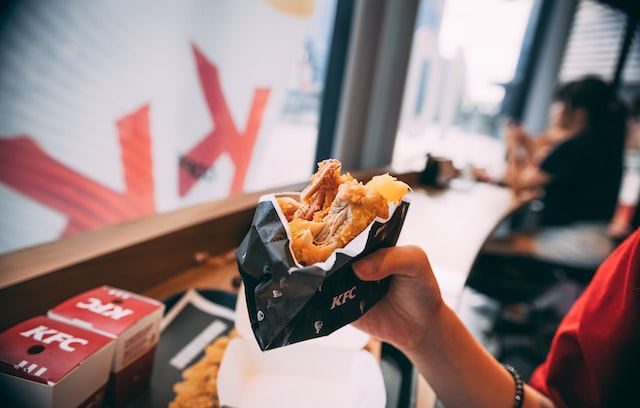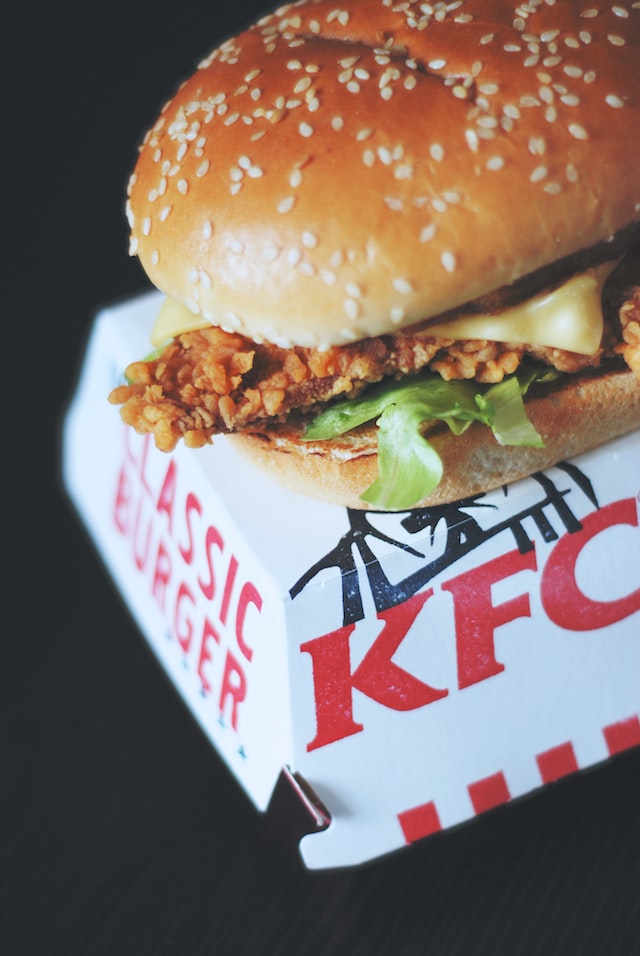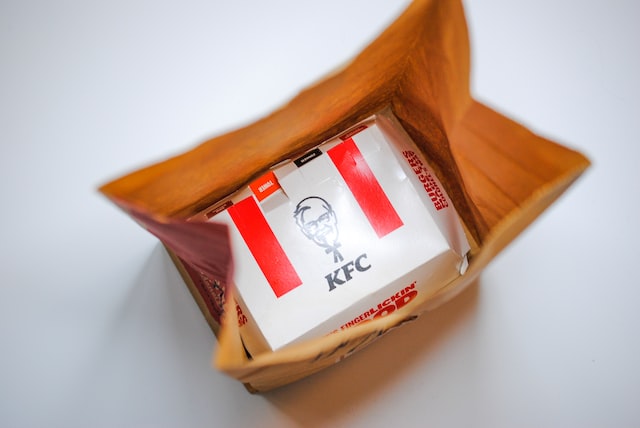Harlan Sanders (9 September 1890 - 1980) was the founder of the Kentucky Fried Chicken brand.

He invented the famous "Kentucky Fried Chicken" and started the "Kentucky Fried Food Chain". With over 15,000 restaurants worldwide, KFC is the world's largest fried chicken chain and the KFC logo, designed in the image of Sandoz, has become one of the world's best and most recognisable brands.
Teenage years
Harlan Sanders was born on 9 September 1890 on a farm near Henryville, Indiana, USA. The family was not very well off, but it was a decent family. However, when he was six years old, his father died, leaving his mother and three children to struggle to make ends meet.
In order to make ends meet, his mother had to take on many jobs outside the home, peeling potatoes at the food factory during the day and sewing clothes at night, leaving her no time to look after the youngest children. When his mother was not at home during the day, young Sandesh had to cook for himself, and after a year he had learnt to cook 20 dishes and became known as a good cook.

At the age of 12, his mother remarried, but Sanders' relationship with his stepfather was not good enough. He went to work on a farm in Greenwood, which was hard work, but he was able to make ends meet. After that he changed jobs and tried everything, so to speak, working as a stucco man, a fireman, selling insurance, being a soldier for a while, and later receiving a correspondence law degree that enabled him to work as a sheriff in Little Rock, Kansas, for a while.
Mid-life
At the age of 40, Sanders came to Kentucky and opened a Corbin's gas station, as there were many customers coming and going for gas, and seeing how hungry these people were on their long journeys, Sanders had the idea, why don't I just make some convenience food to satisfy these people? Besides, he was already a good cook, and his wife and children often praised him for his skills. The idea came to him and he made some everyday meals in the small kitchen of the petrol station to solicit customers.

During this time, Sanders introduced his own speciality, the prototype of what would become known as Kentucky Fried Chicken, which soon became so popular due to its delicious and unique taste that customers praised it, and some even came not for the petrol but for the fried chicken at the Corbin petrol station.
At first, Sanders did this to expand his business at the petrol station, but the fame of the fried chicken went beyond the petrol station and as the number of customers grew so large that the station could no longer accommodate it, Sanders opened a Sanders restaurant across the road to specialise in his specialty, fried chicken.
To ensure quality, Sanders donned his apron and fired the fries, and invested in an extension to the large restaurant that seats 142 people. In this way, he created a rudimentary fried chicken market. In the years that followed, he worked on a special ingredient for fried chicken (containing 11 herbs and spices, which resulted in a thin, almost unbaked crust and moist, tasty chicken. This ingredient recipe is still used today, but the number of seasonings has increased to 40. (And this is KFC's most important secret weapon, as is the recipe for Coca-Cola).

By 1935, Sanders was famous for its fried chicken. The Governor of Kentucky, Ruby Laffont, officially awarded him the rank of Colonel of Kentucky in recognition of his special contribution to the state's diet, so he was known as "Dear Colonel Sanders" until now.
"Penniless after World War II
Although business was good, Sanders was not satisfied with this success and took it one step further by building a motel next to the restaurant. In this way Sanders became the first business conglomerate to combine accommodation with fuel before the famous Hodder and Johnson Motor Inn was built.
However, as the clientele increased, Sanders felt his lack of management experience, for which he took a course in hotel and inn industry management at Cornell University in New York, which enabled him to tackle the restaurant management problems he would later face well, but problems still existed. As Sanders' reputation grew and the clientele grew, it was not an easy task to get the chicken fried and served quickly to so many customers. He was always scrambling to get the chicken ready while listening to customers in a hurry complain.

What could Sanders do about it? It was then that he was inspired by a chance demonstration of a pressure cooker, which was perfect for his fried chicken as it reduced the cooking time considerably and did not burn the food.
In 1939, Sanders bought a pressure cooker and after various experiments with cooking time, pressure and oiling, he finally discovered a unique method of frying chicken. The pressure-fried chicken was the best he had ever tasted, and Kentucky Fried Chicken still uses this recipe to this day. And just as he had imagined, it took only 15 minutes to fry a chicken. The short, tasty chicken became the talk of the town and customers flocked to the restaurant, and even during the Great Depression of the 1930s, Sandoz was still doing well.
However, the outbreak of World War II hit Sanders hard and the government-imposed oil rationing, forcing the station to close. This was followed by the closure of the Sanders Hotel when the new Trans-Kentucky Highway was built through the hotel. This sudden change pushed Sanders into the abyss and he even used up all his bank savings to pay off his debts. Harlan Sanders Sanders, a formerly respected colonel, went from being a wealthy man to a penniless poor man. By this time Sanders was 56 years old and could only rely on the $105 a month handout. But Sanders didn't want to end his life on that note. Besides, he couldn't make ends meet with that handout, he had to rely on himself. He looked at his first Social Security cheque from the government and said to himself, "The government is going to give me $105 a month to get by. There must be something I can do for myself and for others."
Sanders meditated on what he could do to get out of the situation, and the most valuable thing he owned was fried chicken, a huge intangible asset. Suddenly, he remembered that he had once sold the fried chicken practice to a restaurant owner in Utah. The owner did such a good job that a few more restaurant owners bought Sandoz's fried chicken ingredients. They paid Sanders five cents for every chicken they sold. Sanders, who was in a difficult situation, thought that maybe someone else was doing this and that this might be the start of a new career. So Colonel Sanders set out on his second venture, armed with a pressure cooker, a 50-pound bucket of ingredients and his old Ford.
Dressed in a white suit, a black bow tie and dressed as a Southern gentleman, the white-haired Colonel stopped at the door of every restaurant from Kentucky to Ohio, hawking a secret recipe for fried chicken and asking to perform fried chicken for the owners and clerks. If they liked fried chicken, he sold them the franchise, provided the ingredients and taught them how to fry it.

At first, no one believed him and the restaurant owners even thought it was a waste of time to listen to this weird old man's nonsense. Sanders had a tough time getting the word out, and after being turned down 1009 times in two years, he finally got a "yes" when he walked into a restaurant for the 1010th time. With one person, there was a second, and with Sanders' persistence, his idea finally caught on with more and more people.
In 1952, the first licensed KFC restaurant was established in Salt Lake City, and this was the beginning of restaurant franchising in the world. Immediately afterwards, to the amazement of many more people, Sandoz's business snowballed. In just five years, he had developed a chain of 400 restaurants in the United States and Canada.
In 1955 Colonel Sanders' KFC Ltd. was officially established. At the same time, he accepted an offer to appear on a television talk show in Colorado. Being busy all day, he only had to find the only neat suit - a white palm suit - and put on the black-rimmed glasses he had worn for years to appear before the public. The image of the veteran Southern Colonel cooking fried chicken soon attracted a host of journalists and television presenters, and Sanders, who was approaching seventy, was surrounded by people clamouring to work with him, and representatives of restaurants wanting to buy franchises were still flocking to him. In response he built a school for these restaurateurs to come to Kentucky to learn how to run a franchised fried chicken restaurant.
In 1964, an investment group consisting of a young lawyer, John Brown, aged 29, and a 60-year-old capitalist, Jack Massey, were so impressed by Sanders' business that they wanted to buy it for $2 million, which was a considerable sum at the time, and although extremely reluctant, Sanders agreed, considering he was 74 years old, to leave the rest of the business to the next generation. The next generation would have to do it.

In 1971, with the Colonel's approval, Brown and Massey sold this promising business to Huberlein. By this time, KFC's annual turnover exceeded US$200 million. Although the KFC business has changed hands and changed since then, the franchise has remained the same and, of course, its image will always be that of the ever-smiling Colonel Sanders in a white suit with a full head of white hair and black-rimmed glasses. Sanders' life is a legend. He worked in all sorts of jobs, but only found his start in the restaurant business at the age of 40, and then, through setbacks, rose again at the age of 66 to recreate another glory, and with his "franchise", KFC is today the world's largest fried chicken with his "franchise", KFC is today the largest fried chicken chain in the world.